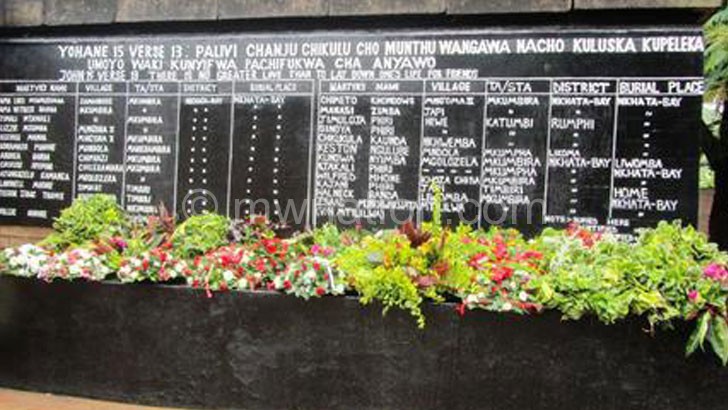Of natural disasters and lessons
Hon. Folks, Malawi has witnessed an unprecedented increase in natural disasters that have killed many people, displaced scores others and destroyed numerous possessions such as capital and other valuable assets.
The most common weather-related shocks to hit the country recently include floods, prolonged dry spells, hailstorms, armyworms and other crop-damaging pests.
All these have gradually increased in frequency, magnitude and scope over the years leaving many vulnerable people with no other option apart from entirely relying on government’s assistance and charitable donations from well-wishers.
But one important reminder is that most of these disasters are mostly linked to climate change and are effects of human-caused global warming happening today due to amplified recklessness by mankind.
Admittedly, many Malawians continue to rely on wood fuel and charcoal for cooking, timber for construction, water for processing, rocks and minerals for raw materials and many other resources provided by nature, but it is sad to note that all these resources are being depleted at an alarming rate as the population continues to grow.
It is irrefutable that the human race has been so careless in meeting present needs and hardly thinks enough about life and survival for future generations if all these resources are depleted. Such is the level of irresponsibility that has massively contributed to the birth of so many natural disasters recently.
Not only did these calamities kill and displace our loved ones, but they also robbed millions of survivors of their basic social-economic and health needs and continue to do so even today.
In this regard, we (as a country) must never forget the urgent need for abundant investments in disaster preparedness and early warning systems to lessen these problems. Every year many lives of people and livestock as well as property are being lost due to disasters, which in turn increases poverty levels (the dependency syndrome) among the affected populations.
Yes, we have an active media that plays a crucial role in disseminating disaster-related news and warnings to the masses, but not all Malawians have access to radio, newspapers and social media. With insufficient disaster preparedness and early warning systems, authorities must embrace more traditional means of cautioning Malawians on looming tragedies, including use of village criers who relay critical public pronouncements.
This is where traditional means of disseminating vital information comes in handy. After all, almost every community has its own means of communicating to its people and identifying quicker ways would mean getting to vulnerable areas before the worst happens.
Again, having more people educated on disasters and early warning signs and risks would help to curb some deaths and losses linked to these catastrophes thereby safeguarding the lives of many vulnerable people such as children who are future leaders, the elderly and people with disabilities.
Certainly more needs to be done to save lives in times of disasters and one of the ways is educating citizens continuously on disaster risks and effective management in all prone areas. Someone said labelling disasters as ‘natural’ enables acceptance of poorly regulated land policies and lack of proactive adaptation and mitigation to avoid detection.
Another thing that is neglected in disaster management is the issue of safe spaces where disaster victims can seek refuge in places of displacement. As it is today most of these camps are in schools, which also has an impact on education. For instance, some people were temporarily housed in school structures such as classrooms in some areas that were recently hit by floods yet schools are opening starting this Monday and learners will be expected to be in those classrooms for studies.
This clearly poses long-term problems on learners as well the displaced people hence the need to create more safe spaces across the country that can offer Malawians critical physical protection during such crises.
Construction of more safe spaces at village, district and national levels may help to relieve schools and churches of being used as emergency camps when such crises strike. These could also improve access to clean water, sanitation and hygiene for victims.




